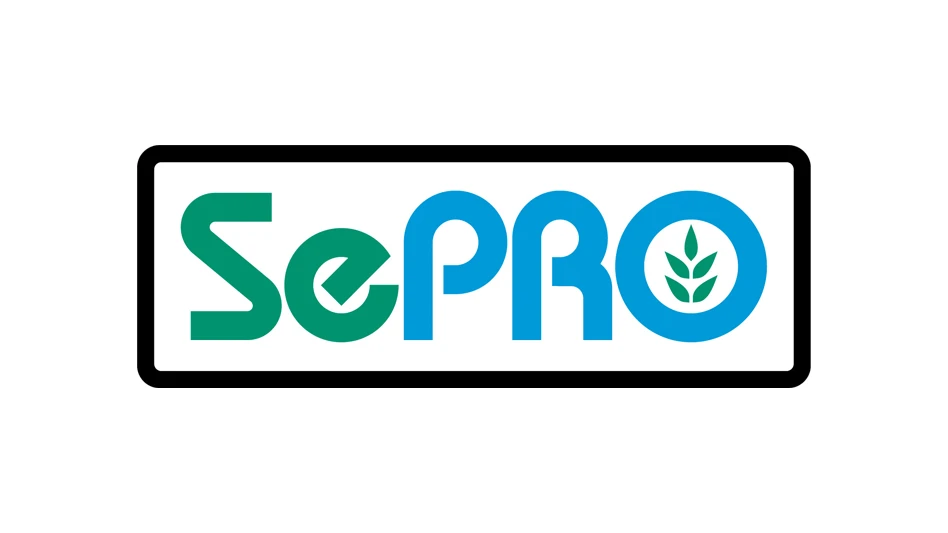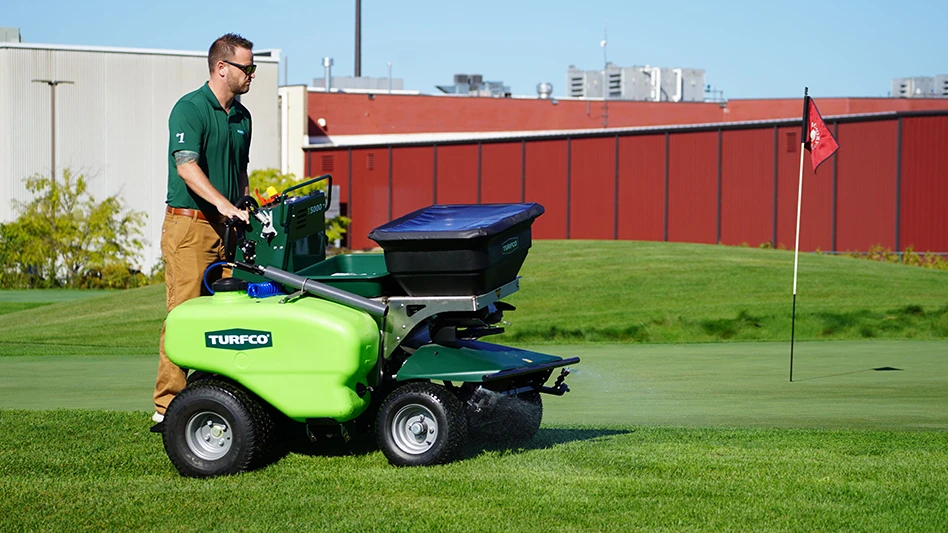As a function of good management, golf course superintendents should examine every task performed on the golf course and ask themselves a series of questions, says Ted Horton, CGCS, senior consulting superintendent for ValleyCrest Golf Course Maintenance and owner of Ted Horton Consulting.
These questions should include, but aren’t limited to:
• Can the task be accomplished at less of an expense if outsourced?
• Can the task be performed better by someone with more knowledge or better equipment if outsourced?
• Can the task be performed faster or at a more appropriate time with less golfer interference if outsourced?
These questions aren’t always easy to answer. Some answers amount to educated guesses or gut feelings; others rely on trial and error.
“Often, outsourcing will provide a positive solution to one or more of the questions,” Horton says. “However, and this is the clincher, savings can only be truly affected if the superintendent is willing or able to reconcile his labor pool, for example, reducing the equivalent man-hours that he or she is outsourcing and/or reducing the equivalent equipment inventory.”
There are a variety of critical functions that can be outsourced, Horton says, including routine activities like fertilizer applications or core aerification or specialty services like pond maintenance or wildlife control. Some facilities opt to outsource their entire maintenance operation.
In any case, a successful outsourcing setup can be a solid business decision – resulting in reduced equipment costs, reduced labor costs and less interference to golf, which can improve customer satisfaction and revenue. Supertintendents weigh in on how they make these decisions.
Evaluating equipment maintenance
Three years into a five-year contract for outsourcing equipment maintenance needs, Ron Dahlin, CGCS, at The Meadows Golf Club at Grand Valley State University in Allendale, Mich., hasn’t looked back at the days when he had an in-house technician.
“It’s been a very good arrangement for us,” says Dahlin, who estimates he’s reduced his costs by one-third thanks to dropping a full-time salary and benefits package. “It really was a good business decision. I kept waiting for the shoe to drop, and it just hasn’t.”
Three years ago Dahlin, whose maintenance budget is just under $500,000, struck a deal with his local John Deere distributor, Weingartz, an outdoor power equipment dealership with four locations in southern Michigan.
While brainstorming ways to outsource equipment management, something he had heard was common on the West Coast, Dahlin was approached by an independent technician who offered his services one day a week.
“We walk-mow all greens and tees, and there’s so much equipment that goes out of here every day,” Dahlin says. “I knew we needed someone more than once a week.”
So he approached Ron Weingartz, his local John Deere distributor.
"He was very open to the idea because it would allow him to balance out the technicians’ work in his shop,” Dahlin says. “He did a lot of legwork, I did a lot of legwork and we came to a very good agreement.”
Under the agreement, at least one technician (sometimes more, depending on workload) comes to the golf course every Tuesday and Friday. The techs are well versed on the preventive maintenance that needs to take place regularly, and Dahlin briefs them via e-mail about any “surprises” or special instructions the night before they come in.
All John Deere equipment is included in the price of the agreement; the technicians repair non-“green” equipment at a reduced shop rate that’s outside of the deal. Dahlin estimates his equipment inventory is about 70 percent Deere.
The agreement has created another cost reduction that Dahlin didn’t initially account for – his total repair budget has dropped from about $25,000 to $8,000. Some of that may be due to equipment changes, Dahlin says, but he believes most of it can be attributed to the knowledge and experience of the factory-trained technicians.
Additionally, Dahlin doesn’t have to stock spare John Deere parts. Weingartz does that for him. He does, on occasion, have to place orders for non-Deere parts himself.
The agreement also has prevented the golf course from having to purchase some shop equipment – like a reel grinder and bedknife grinder. The deal includes mid- and end-of-season grinding, which takes place at Weingartz.
If there’s anything that can’t be repaired at the golf course, the techs will take the equipment back to their shop and supply Dahlin with a replacement in the meantime. There’s only been one instance when Dahlin has had an “emergency” and a tech has had to come out to the course on an unscheduled day.
Setting up an agreement like this is something Dahlin believes any course should consider. In fact, he’s had about eight phone calls from his peers over the last six months inquiring about how to do so.
“They’re trying to find ways to save a bit of money, like me,” says Dahlin, acknowledging that facilities with more than 18 holes might have to consider more extensive arrangements, such has having the technician on site more than twice a week. “But I really think this is something any course could do.”
Opening up aerification
Tom Tuttle, CGCS, has contracted out aerification activities for as long as he’s been at Trenton Country Club in West Trenton, N.J., or about 12 years. These include DryJect, drill-and-fill and core aerification.
The decision to outsource DryJect and drill-and-fill aerification is due to lack of proper equipment, something most superintendents run into because the cost of the machinery (tens of thousands of dollars) is prohibitive for a maintenance activity the golf course conducts usually once per year.
For drill-and-fill aerification, Tuttle says the contractor, AerCore, based in Pottstown, Pa., typically arrives with three machines and aerifies 19 greens in one day. He estimates the cost is $1,500 to $2,000.
For DryJect aerification, which Tuttle hires the manufacturer’s franchise to do, he estimates he spends about $3,000.
Paul Galligan, director of golf courses and ground maintenance at the Grand Traverse Resort in Acme, Mich., also outsources a specialty aerification function, deep-tine aerification.
For about the last seven years he’s contracted out this service to a sports field management company. Like Tuttle, Galligan can’t do this service in-house because the machine itself costs about $50,000 and he only needs it done once a year. He declined to share the cost, but says the contractor charges him a square foot price. Though he manages 54 holes, he only does deep-tine aerification on greens at two of the golf courses.
“If I had the equipment and manpower, I’d probably do the greens and tees on all three golf courses plus a couple of fairway spots,” he says.
For Tuttle, the decision to outsource core aerification is based on timing.
“It just allows us to concentrate on other parts of maintaining the golf course,” he says.
Trenton Country Club core aerifies everything twice a year, and usually outsources the activity once a year – in the late summer – to a company called, ProAer, located in Hopewell, N.J.
At that time of year, there are other routine maintenance activities Tuttle wants his staff to focus on. He estimates he spends $6,000 to $7,000 on core aerification.
Tuttle, whose maintenance budget is just over $1 million, says his agronomic goals and budget drive whether or not he contracts out these services each year.
For example, with the DryJect and drill-and-fill services, the original purpose for using these services was to modify the soil structure and incorporate more porous material into the soil because the course’s greens don’t have subsurface drainage.
“Over time, as those conditions have improved, our need for that type of work has decreased,” he says.
In addition, this year’s budget cutbacks have affected his decisions.
“Outsourcing aerification is one of those things that’s nice, but in a pinch we can probably live without it for a year or two,” he says. “With the DryJect, we may cut back to every two or three years. With the drill-and-fill, budget issues have disallowed us to do it this year.”
Overall, though, Tuttle is confident those services will come back when the economy rebounds.
“We had to cut back on some things and we’re going to be required to do more in-house, but the club and the membership see the value and don’t want us to move away from those permanently.”
Being proactive
Chris Lecour, superintendent at Raven Golf Club at Lora Bay in Thornbury, Ontario, says he tries to keep most of the regular maintenance in-house, but he considers outsourcing from time to time. When he’s weighing what to outsource, he considers expertise, costs and time.
For example, he contracts out the irrigation pump house shut-down and start-up to the pump distributor every fall and spring.
“After watching them and taking good notes, I’m sure we could handle 90 percent of the checklist,” Lecour says. “But they only charge us $200 twice a year. On a $500,000 system, I have no problem paying them that.”
Lecour also recently shopped around for pond management services, but he decided not to contract that out at this time. The work he inquired about doesn’t need to be done right away; Lora Bay has only been open for four years, and its three ponds don’t have a lot of algae yet.
“We just wanted to get a plan in place to head off any problems, so we asked a gentleman in our area to come in and help us eliminate any costly expenses down the road,” says Lecour, who has a maintenance budget between $800,000 and $850,000 (Canadian), which he trimmed 10 percent from last year.
The pond maintenance company Lecour shopped suggested several options for Lora Bay, which is part of the Audubon Cooperative Sanctuary program. They included aeration systems, floating island products and an incubation tank that flushes bacteria into the pond, designed to help with anaerobic conditions. The installation would have cost about $6,200 (USD) and about $800 a month for maintenance services.
In the end, Lecour opted not to outsource pond maintenance yet.
“We aren’t going to do anything differently than what we’ve done it the past,” he says. “Having someone come in and evaluate was more of a proactive step. We’re going to look at other inexpensive, environmentally friendly options, like installing windmills by the pond, which is something farmers have been doing for years. We’ll build that into the capital budget.”
When it comes to outsourcing, so much goes into a superintendent’s decision, Lecour says. Sometimes, like with an upcoming project to rebuild tee boxes, going with the experts vs. doing it in-house is the way to go, he says.
Galligan agrees that construction and renovation projects are often good candidates for contracted work. For him, evaluating whether to outsource this type of work is all about the tolerance you have for a mess.
“A contractor can put all of their efforts and manpower into a project for two days,” Galligan says. “It’s going to take you a lot longer. So what’s your tolerance level – how long can you let it go on?”
Good question. “When it involves large pieces of equipment or we need a quick turnaround, I prefer to outsource,” Lecour says. “We have a short season and a short window. Sometimes it’s more expensive, but you get more bang for your buck.” GCI

Explore the May 2009 Issue
Check out more from this issue and find your next story to read.
Latest from Golf Course Industry
- Atlanta Athletic Club approves funding for master plan
- Maximizing Cultural Practices and Agronomic Benefits with Minimal Surface Disruption
- Real Answers about Spray Nozzle Choices
- From the Course to the Factory: How Customer Insights Drive Innovation
- New & Proven Enzyme Strategies for Sprayable Thatch Management
- Innovating Tomorrow: Wittek’s New Products & Industry Staples
- PBI-Gordon introduces new field development team
- The Cabot Collection announces move into course management






